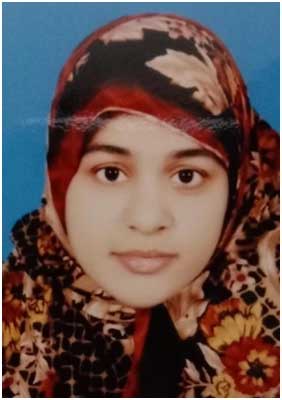Education is a matter of life and death for Pakistan. The world is progressing so rapidly that without requisite advances in education not only shall we lag behind other but may be wiped out altogether”, these were words of Quaid-i-Azam after creation of Pakistan. Now Pakistanis must ask themselves a prickly question: Has the dream of the Father of the Nation been materialized so far? Sadly, the answer is a big NO. The analysis of education system in Pakistan reveals dismal results and horrific flaws in the system. It is high time, a better sense must be prevailed and some robust steps should be taken to avoid the consequences of shambolic education system.
Pakistan is faced with myriad socio-economic and religion-political issues. Some of them are visible and others are lurking beneath the surface. The social indicators show perplexing results. Economy is constantly on downward trajectory. Political wrangles and religious vitriols are in full-swing. The toothless laws have become jewels of statute books but little has been achieved on reals grounds. Sadly, education is not priority here. Many reports reveal the ugly reality that the bedrock of development, education, is ignored deliberately in Pakistan.
There is also dearth of education institutions in Pakistan. This is one of the reasons for lack of education in Pakistan; especially, girls are more affected due to lack of schools. They cannot travel to schools situated at long distances. If they have resources and dare to travel far away for schooling, patriarchal society creates hurdles for them. The deep religiosity in society also shows unwelcoming attitude towards coeducation. Therefore, the inadequacy of schools has played its part to destroy education system.
Pakistan is unable to put itself out of the whirlpool of multiplicity. It is multi-ethnic, multi-linguistic and multi-cultured country. Interestingly, its education system is also multiple. Mainly, the education system in Pakistan is divided into three different sectors; public, private and madrassahs.
Private sector performs fairly well but it is out of reach of the poor people due to high expenses. Government schools lack standard and quality. Whereas, madrassahs produce incompetent religious hordes, that go jobless in this modern world. This multiple education system has divided the society on the lines of haves and have-nots. As a result, wealth is concentrated in the hands of few and many socio-economic and religion-political problems have emerged, in this country.
The teachers also lack competency. They are not learned and trained enough to breed young minds excellently with their knowledge. They often love to become ghost teachers due to their inability. There are incalculable incompetent teachers in Pakistan. They avoid attending schools so that they may not face humiliation. Even competent and well skilled teachers do not go to schools and run their private businesses under the patronage of political masters. This phenomenon is common in Pakistan. The government is unwilling to take notice. This is why this sorry state of education exists.
The research and development are basic foundations of progress of any country. However, it is hardly practiced in Pakistani education institutions. Students are not taught practical knowledge. For example, students of mechanical degree get degree from a well-known university but learn practical work at a mechanical shop. This is a mockery of system. Indeed, a man cannot learn swimming only by reading about it. He will have to jump into water to learn practically. Similarly, students cannot excel in their practical life if they do not know the way to handle the matters. Pakistan will remain economically shaky unless it introduces an efficient research and development system.
“Education is the most powerful weapon which you can use to change the World,” said the towering and magnetic African ladder Nelson Mandela. The game is not over yet some doable strategies can change this cataclysmic course. Pakistan must declare education emergency. The vision 2025 of mainstream government has target of 95% literacy rate and 100% enrolment ratio; this idealistic target can only be achieved by imposing educational emergency. Those parents who do not send these children to schools should be punished or fined by state. Free and compulsory education must be imparted to people with the sense of urgency.
Furthermore, there must be one syllabus and one system. Pakistan can replicate Iran’s model. It has one system and on syllabus for whole population. Even sometimes, one can also learn from enemy. India is educationally far ahead of Pakistan. Its state of Kerala has 98% literacy rate due to equitable policies; all rich and poor, men and women, majority and minorities read some books, compete for same exams and get same opportunities. The trio-equation of public, private madrassah conundrum must be disbanded. There should be one national syllabus for all and sundry.
In a nutshell, the evaluation of contemporary education patterns gives appalling results. The global indices and recent reports cast a pall of gloom and doom over education. The problems such as out of school ratios, paucity of funds, institutions and infrastructure strike woes in the heart. Moreover, multiple forms of systems, second rate material, incapable teaching staff and dearth of research add fuel to fire.
To put it simple, these problems have spawned many socio-economic and religion-political problems. However, one must always see through prism of optimism. The whole system can be revamped by going some extra miles. True, there are multifaceted problems in education system of Pakistan but some wiser, sober and sincere efforts can pave the way for a comprehensive quality education system. Hopefully, the darkness will go away and a broad light of knowledge will prevail for good.
Critical analysis of education system in Pakistan



